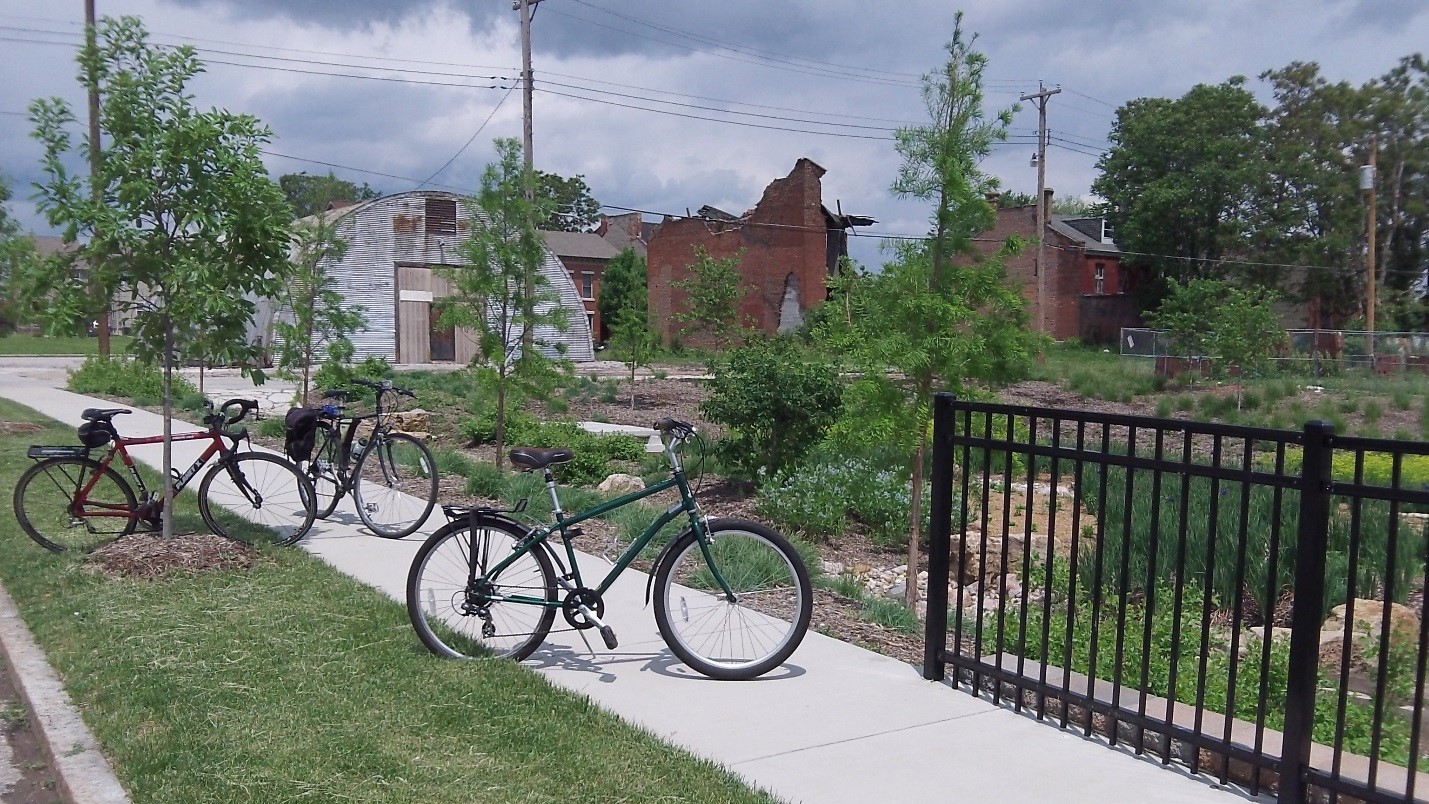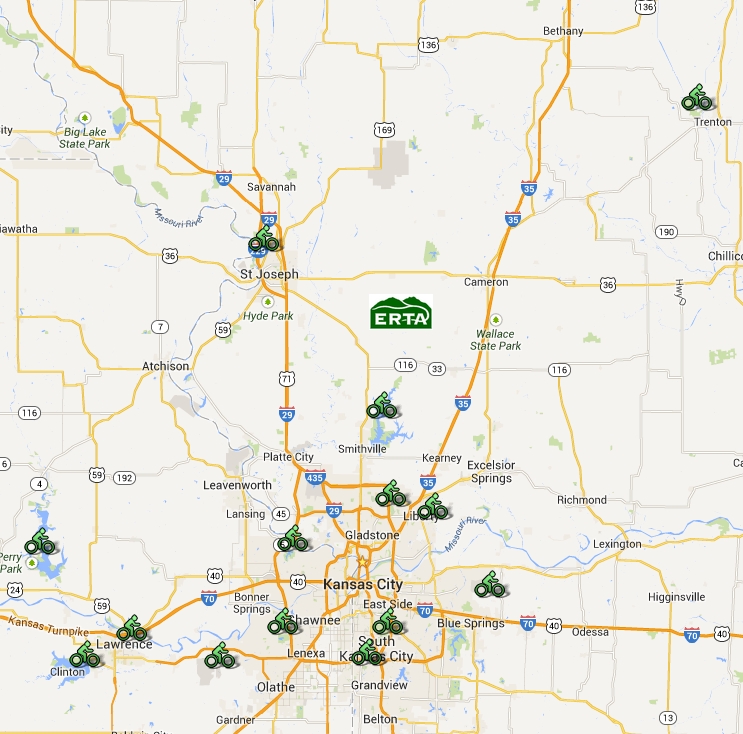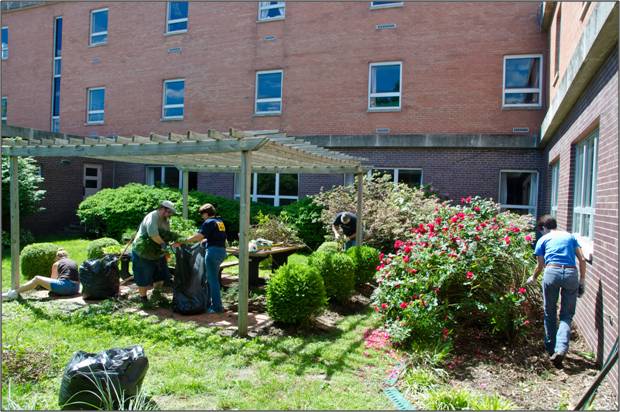EPA In Your Community (Pedal Away!)
By Brendan Corazzin
Region 7’s EJ Grants Coordinator
While biking may be an excellent way to exercise, it can also serve as a viable and inexpensive form of transportation that has many environmental and health benefits. Joe Edgell tells us it is easier than you think. Let me tell you about one of EPA’s Environmental Justice Small Grant awardees and the work they are doing in St. Louis to address the inequitable distribution of biking infrastructure in the city.

Example of a shared traffic lane. This picture was taken in Arlington, Virginia. Image by Brendan Corazzin.
Often times, transportation is an overlooked environmental justice issue. It is not uncommon for low-income households to lack access to a personal vehicle and many low-income urban neighborhoods have poor access to public transportation. Entire communities are cut off from valuable public services and amenities. Lack of transportation means a lack of access to fresh foods, a lack of access to medical facilities, and poor access to jobs. In St. Louis, Missouri, a small non-profit organization, Trailnet, is working to reverse this trend by promoting bicycling as a viable mode of transit.

During a bike ride with Trailnet staff and project partners, we stopped at a rain garden at 14th and Clinton Street in the Old North Neighborhood of St. Louis. Image by Brendan Corazzin.
In 2013, Trailnet, Inc. was awarded an EJ Small Grant to work with low-income neighborhoods across St. Louis on bicycle planning and advocacy. Historically, planning activities related to bicycle infrastructure have left out low-income and minority communities. As a result, the existing infrastructure does not serve the needs of these communities. Through a series of educational activities, planning workshops, and community events, Trailnet will encourage bicycling as a mode of transportation and bring community members to the table so they can be involved in the planning process. This past May, I was in St. Louis to visit with Trailnet regarding their project. Rather than driving a car from Kansas City to St. Louis, I decided to use alternative modes of transportation starting with a bike ride from my home in midtown Kansas City to the train station downtown. After a 5 hour train ride, I arrived in St. Louis at the downtown train station and over the next two days I experienced St. Louis’ biking infrastructure first hand.
I will admit, my experience lead me to the conclusion that St. Louis and Kansas City (where I live) have pretty similar biking infrastructure…which is less than impressive. Don’t get me wrong, both cities have invested quite a bit in bicycle planning and both cities support bicycling, but they’re still early in the process. Getting around the downtown area, where most of my activities were, was fairly easy. There are a few dedicated bike lanes in downtown and few more “shared traffic lanes”. A shared lane is really just a regular traffic lane with a bicycle emblem painted on it, alerting drives to the possibility that there may be a cyclist in the lane. I also rode in west St. Louis and on the south side of town, where again there were a few dedicated bike lanes and some shared traffic lanes. In North St. Louis, however, travel was a bit more difficult because there are only shared traffic lanes.

“Schoemehl Pots” are frequently found at the intersections of neighborhood streets in St. Louis. The pots were originally installed to divert traffic from residential streets and could be reused to improve biking routes. Image by Brendan Corazzin.
North St. Louis is predominately African American and low-income. This is where one could witness the historical presence of environmental injustice in transportation planning. While other parts of town are accessible by bike lanes and downtown has its fantastic bicycle station, a public bicycle storage and maintenance facility, North St. Louis is left with only shared traffic lanes. This problem is compounded by the fact that beginner riders typically lack the skill and confidence to ride in traffic. As a result, you have a community where bicycling could serve as a viable form of personal transportation – taking people to work, the grocery store, school, or church – yet ridership remains low. Admittedly, there are many reasons for low ridership, but better infrastructure is an important part of increasing bike usage and our grant to Trailnet will help!
By working with residents, city staff, and elected officials, Trailnet hopes to break down the barriers that are preventing the community from utilizing bicycles as a cheap, efficient, effective and safe means of getting around St. Louis. By bringing community members to the table, Trailnet has been able to gather important information about community needs and wants. This input will inform transportation planning in St. Louis and help shape a future that supports bicycling by establishing safe, low stress routes that connect points of interest important to the community. Environmental Justice is all about supporting communities so that they can use their voice and knowledge to create positive changes and improve their environment. The Environmental Justice Small Grants Program has a long history of supporting communities in their fight to improve their environment. To learn more about environmental justice and EPA’s EJ grant programs, check out EPA’s website.

This map was used during a public meeting in North St. Louis. Residents were asked to identify points of interest, streets they bike or walk on, and streets that they would bike on if conditions were more inviting. Image by Brendan Corazzin.
Brendan Corazzin works in the Environmental Justice Program at EPA’s Region 7 office. He serves as the regional EJ grants coordinator. He lives in Kansas City’s Volker neighborhood and prefers to leave his car at home. He is an avid supporter of alternative transportation including walking, biking, and riding to work in a vanpool.




















